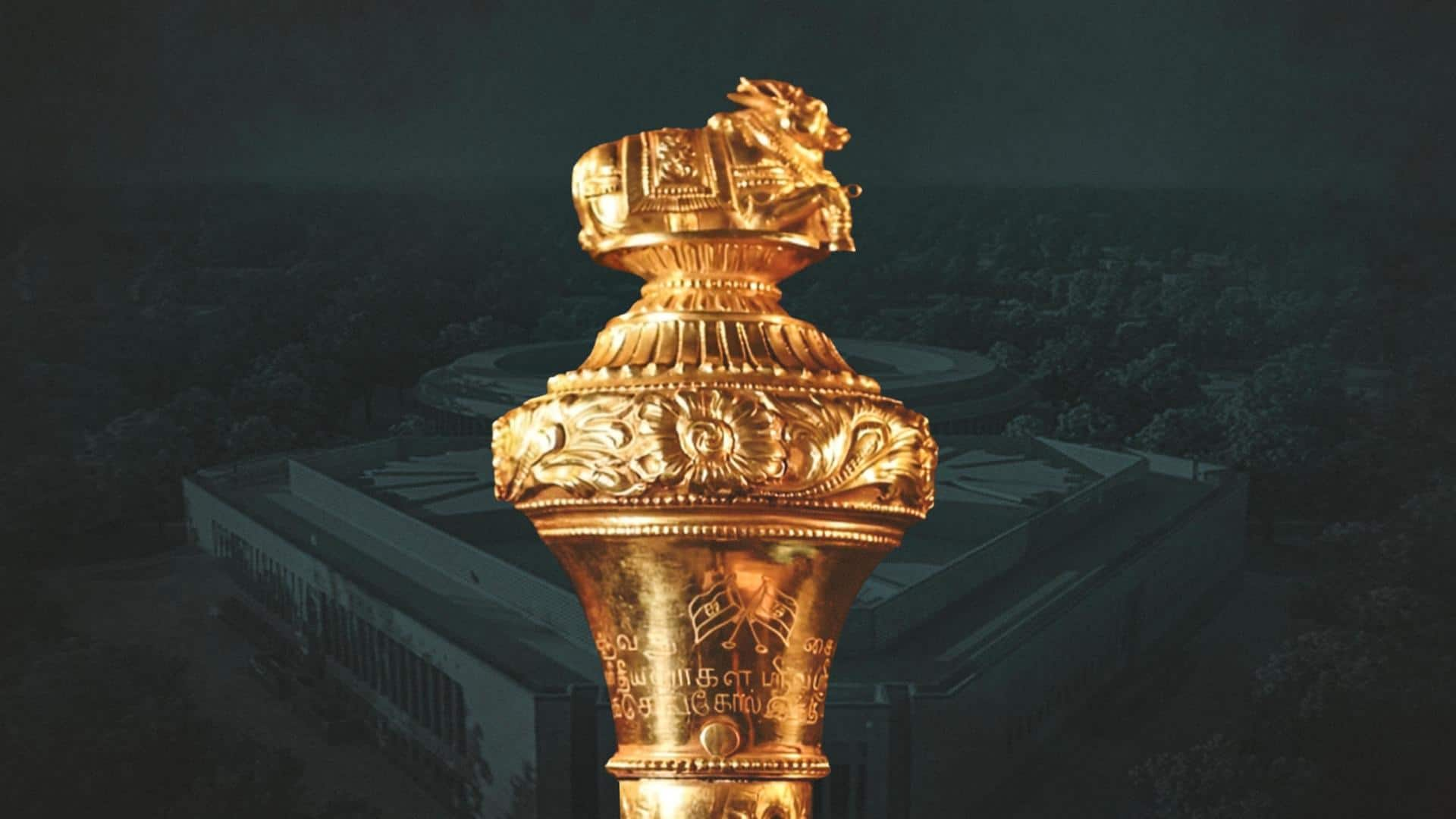
What is 'Sengol,' scepter to be installed in new Parliament
What's the story
Prime Minister Narendra Modi is set to install the historic scepter "Sengol" inside the new Parliament building on the occasion of its inaugural ceremony on Sunday. Informing reporters about the scepter, Union Home Minister Amit Shah said that the "symbol of the transfer of power" would be placed near the Lok Sabha Speaker's seat. Here's everything to know about "Sengol."
Twitter Post
Here's Shah's statement on 'Sengol'
At the inauguration of the new Parliament House,PM @narendramodi will establish the historical and sacred "Sengol" in the Parliament House
— Spokesperson, Ministry of Home Affairs (@PIBHomeAffairs) May 24, 2023
This sacred "Sengol" is the symbol of the transfer of power from the British to India-Shri @AmitShah
Press release-https://t.co/nRD2CzX839 pic.twitter.com/BUvWeQCPKA
Meaning
Golden specter has Lord Shiva's bull on top
"Sengol" originated from the Tamil word "Semmai," which means righteousness. Reportedly, the ceremonial staff is gold-plated, weighs about 800 grams, and is five feet in height. The scepter has Lord Shiva's bull, Nandi, on top of it to symbolize justice. The Hindu reported that during the Chola dynasty era, kings used to hand over "Sengol" to their successors, symbolizing the transfer of power.
History
'Sengol ceremony' was suggested by C Rajagopalachari
When India was about to get independence, Lord Mountbatten, the last British Viceroy of India, posed a question to then-to-be Indian PM Jawaharlal Nehru about the ceremony that should be followed to symbolize the transfer of power. Nehru consulted C Rajagopalachari, aka Rajaji, who suggested the Chola model. Rajaji was the last Governor-General of India before the country became a republic in 1950.
Ceremony
'Sengol' handed to Nehru on August 14, 1947
The "Sengol" was crafted by well-known jeweler Vummidi Bangaru Chetty in the Madras Presidency. On August 14, 1947, the ceremony was conducted by the deputy high priest of Thiruvavaduthurai Adheenam, a 500-year-old Saivaite monastery, nagaswaram player Rajarathinam Pillai, and a person who sang divine songs in Tamil temples. The golden specter was then handed over to Nehru at his residence in New Delhi.
Parliament
'Sengol' represents the feeling that Nehru felt: Shah
In a press conference on Wednesday, Shah said the transfer of power is not merely a handshake or signing of a document and that it must remain connected with local traditions, keeping in mind modern needs. "'Sengol' represents the same feeling that Nehru felt," he added. Notably, the "Sengol" was kept at the Allahabad Museum in Uttar Pradesh's Prayagraj all these years.